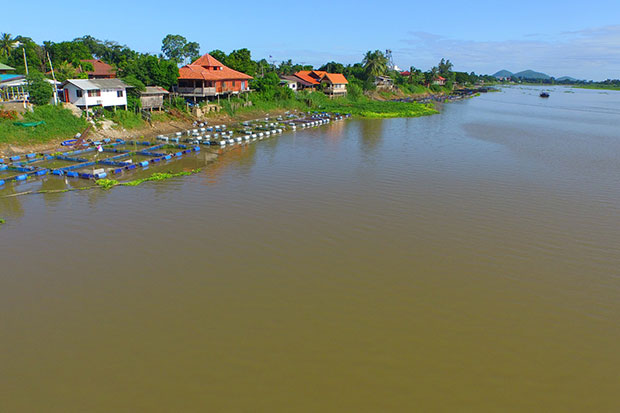
The depleted water supply behind the Chao Phraya Dam has improved a little, with the level showing a rise of 3 centimetres on Tuesday after successful rainmaking flights over parts of the Central Region.
Dam director Ekkasit Sakthanaporn said on Tuesday the water level in the reservoir was 13.35 metres above sea level at tambon Bang Luang, in Chai Nat’s Sapphaya district - a small 3cm rise, but still 65 cm below the critical 14 metre point.
The dam continued to discharge water at a rate of 70 cubic metres per second.
Last week, irrigation officials expressed alarm at the continued depletion of water in the Chao Phraya Dam after the reservoir level dropped further below the crisis point.
Officials in charge of water management on the lower basin of the Chao Phraya River held an urgent meeting to adjust water-discharge plans to cope with the continued diminishing water supply from rivers in the northern region.
Mr Ekkasit attributed the small increase in the water level to rainfall in upstream areas of Kamphaeng Phet and Chai Nat provinces. Rainmaking operations that started last week had caused rain in those areas.
However, he repeated appeals to farmers not to start planting delayed crops yet, as there was not enough water in the dam to allocate to their fields.
He urged farmers to closely follow news updates from the authorities. The water supply was expected to improve by mid-July, he said.
In Chai Nat’s Wat Sing district, Khlong Makham Tao, a major water source in tambon Wat Sing, has run dry, disrupting tap water production in the community.
Piya Thongwattana, mayor of Wat Sing tambon municipality, said on Tuesday that water pumps would be relocated along the Chao Phraya River, about 1.5 km away from the current site. They would provide water from the river to the community’s raw water pumping station through PVC pipes. Tap water would be available to over 1,500 households, said Mr Piya.
The Royal Rainmaking Northeast Operations Centre has intensified cloud seeding flights across the region, in a bid to increase water levels in dams and canals.
Thawee Kanchana, director of northeastern operations, said new centres have recently been set up in three northeastern provinces -- Nakhon Ratchasima, Khon Kaen and Ubon Ratchathani -- for artificial rainmaking over drought-hit areas.
The northeastern centre has the use of seven aircraft. The planes could make six trips a day, spraying about 20 tonnes of seeding chemical in the clouds and focusing on upstream areas of dams and areas hit by the severe water shortage, said Mr Thawee.
In Nakhon Ratchaisma about 10 tonnes of chemicals would be used for rain-making operations as the Lam Takhlong reservoir, a major water source in the province, now held only 57 million cubic metres of water, or 18% of capacity. Water in the reservoir would last only two more months if there was no rain, said Mr Thawee.
Authorities have declared 25 of the 32 districts in Nakhon Ratchasima drought-affected zones. The extreme water shortage has affected a total of 812,181 residents in 289,376 households, or 1,809 villages, and damaged millions of rai of farmland.